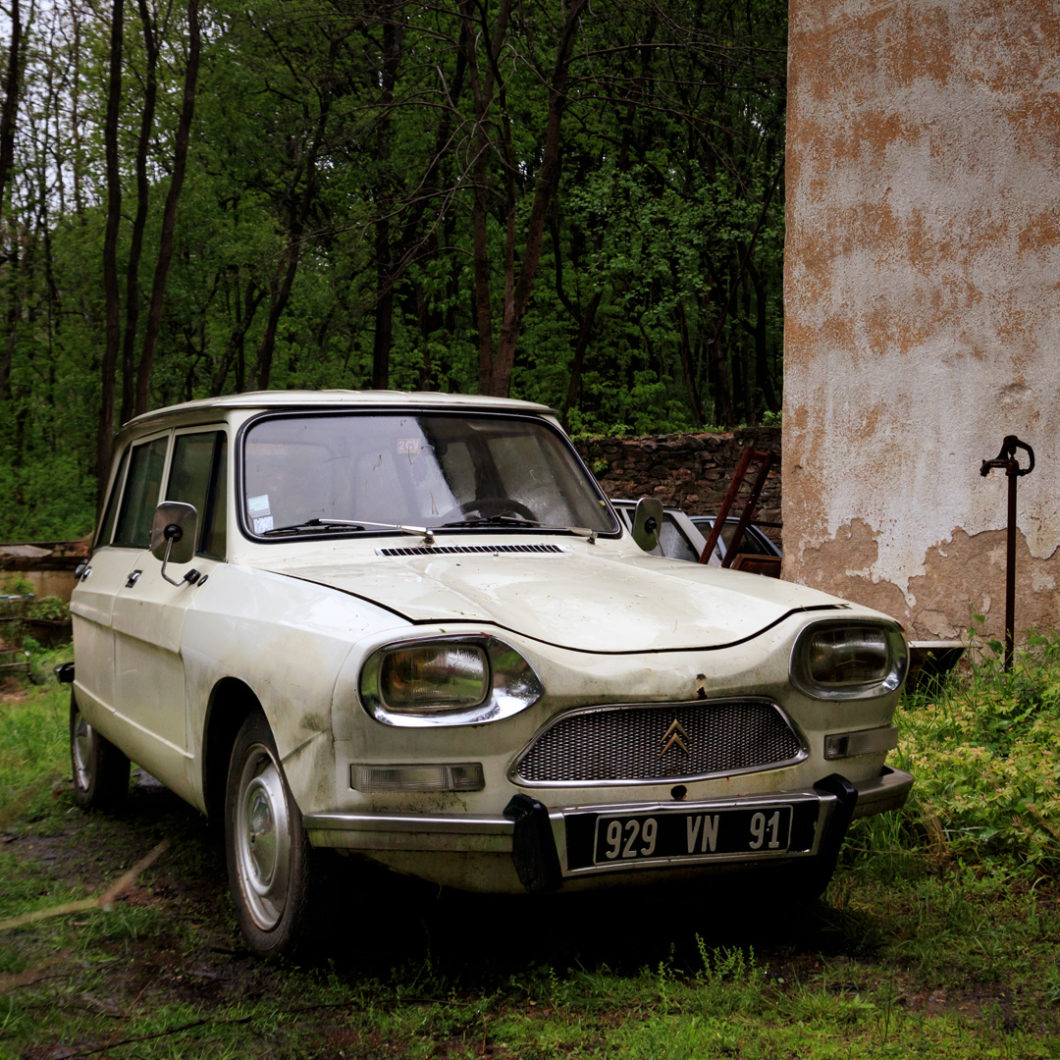In the late 1950s Citroën sold just two basic designs – the large DS (and its slightly more basic companion, the ID) and the tiny, bare-bones 2CV. The chasm between the two had been the subject of internal worry ever since the 2CV’s debut, and in 1953 Citroën’s André Lefèbvre began work on a series of unusual teardrop-shaped family car prototypes for “mid-market” Citroën.
La Coccinelle
These wild, gullwing-doored UFOs, the C1 through C10, were later called the “Coccinelle” for their resemblance to a ladybug. With the DS taking all of the company’s resources, Citroën eventually dropped the idea in favor of a more expedient solution – an enlarged, restyled 2CV that became the Ami 6 in 1961.
The Ami was meant as a stopgap until a more sophisticated design (work began on another “mid-market” car called the C-60 in 1960, it also ended up abandoned) could be created, but it ended up in production until 1978.
The Ami came initially as a small sedan based directly on 2CV mechanicals and powered by an enlarged 602-cc version of the 2CV flat twin (later added to the 2CV itself).
It was nothing if not distinctive – looking as if it rolled out of a Jean-Luc Godard film, the defining feature was a radical reverse-rake rear window, a feature first seen on the Packard Balboa X show car and later on Euro Fords and American “breezeway” Mercuries (and 1958-60 Lincolns). Flaminio Bertoni would later describe the Ami sedan as his favorite design.
The strangeness did not end at the rooftop – the Ami was unusual all over, and there was something really new up front. The Ami was one of the first cars to use flush headlamps – rectangular units made by Cibie – a trend that would proliferate later. Flush glass had been tried before and was also used contemporaneously on the Ford Taunus, but the Ami had some of the first modern integrated lights.
The cars were built in a new factory at Rennes in Brittany – the opening was personally presided over by Charles De Gaulle, but their sales were slow at first. The Ami cost 35% more than a 2CV but was still rather minimal inside, and fundamentally it was a fancy 2CV.
Ami 6 to Ami 8
Bertoni’s initial lines were progressively tone down over the years by his successor, Robert Opron, to make them “less aggressively weird,” particularly on the late 1960s transition to the Ami 8 – a major facelift that made it more conventional and eliminated the wild roofline on the sedan.
Before that happened a wagon body was added in 1964 with both far more space and a much more conventional appearance, at least, from the A-pillar back. The Break soon surpassed the sedan, and later informed the shape of the fastback Ami 8 sedan of 1969. A rather nice Van version was also offered.
The 1970s Amis
The “mid-market Citroën” – the GS – took forever to arrive – only debuting in 1970. That meant an extraordinarily long life for the Ami and two unexpected late arrivals – the 4-cyl Ami Super (using the GS’ four) and the test-market Rotary M35 Coupe, a limited production machine meant as a testbed for the Citroën-NSU Comotor project.
The Ami Super was a bit of a hot rod by economy car standards owing to its light weight, but it looked like a decade-old Ami and it was pricey for what it was, so most 1970s Amis were just the regular 2-cylinder Ami 8, which ran into 1978 before being replaced by the Visa. Around this time, Citroën also offered a more conventional 2-cylinder economy car, the Peugeot 104-based LN.
Believe it or not this photo was not taken in France but in Pennsylvania. The Ami was imported to the U.S. in very tiny numbers in the early 1960s (sans flush headlamps, as they were not legal here); but this is a much later private import formerly owned by a friend of this blog.
To find out more about Citroëns of all stripes, visit Citroennet.org.uk.

